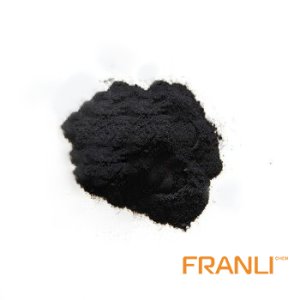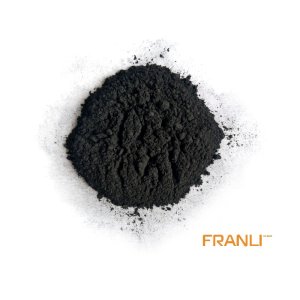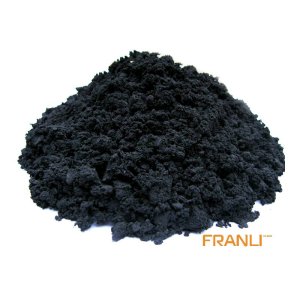
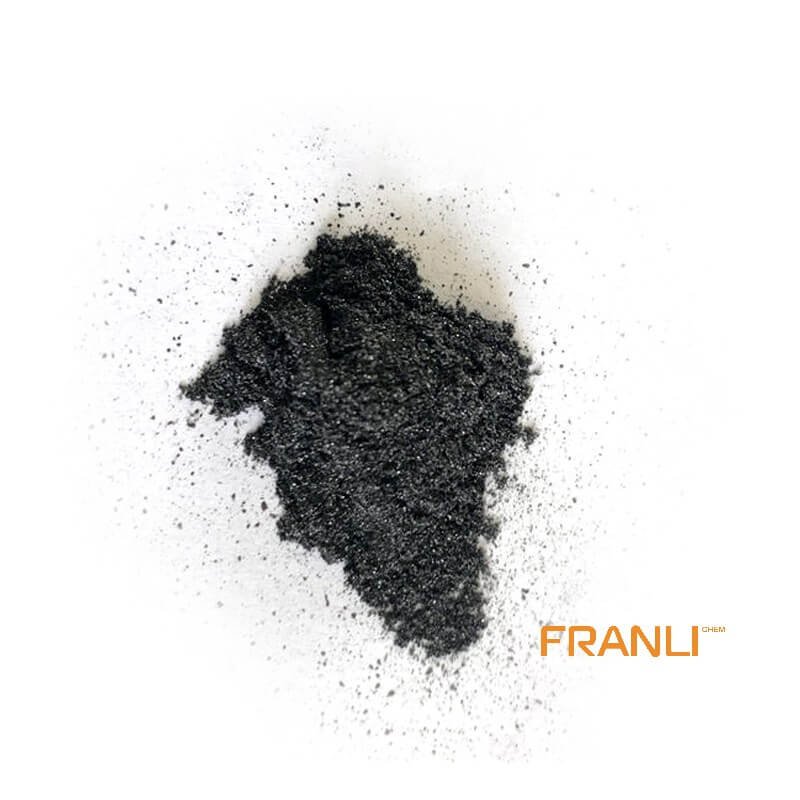
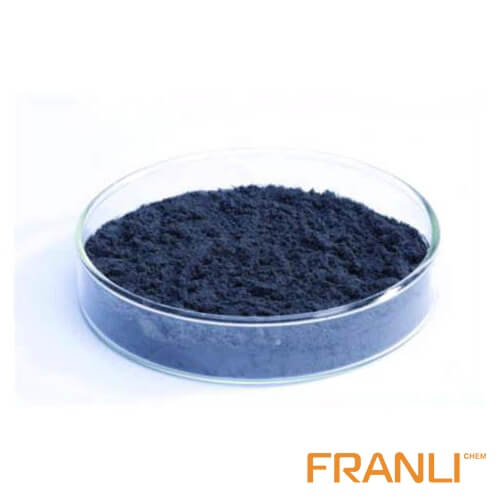
Expandable Graphite
Size
0.50mm or 0.106mm, etc
Package
25 kg small bags into ton bags
Origin
China
Features
Preservative/Electrical and thermal conductivity, etc.
Application
Fireproof sealing element, flame retardant, refractory brick, etc.
Expandable graphite crystal is a typical layered carbon material. Other heterogeneous particles such as atoms, molecules, ions, and even atomic clusters are inserted into the interlayer of crystalline graphite by physical or chemical methods to form a new layered compound, which is called graphite interlayer compound, namely expandable graphite.
Request a quote
At home and abroad, expandable graphite is produced by sulfuric acid or mixed acid (concentrated sulfuric acid is the main chemical reagent). Sulfuric acid enters the graphite layer or adsorbs on the graphite surface and edge due to adding sulfuric acid in the traditional process route. The residual sulfur in expanded graphite has a strong corrosion effect on metal, and the oxidation resistance at high temperatures is weak. In recent years, to reduce sulfur content and improve the oxidation resistance at high temperatures, more research work has been done in chemical oxidation.

The research on the new technology of low sulfur expandable graphite is a hot topic. In the research of low sulfur expandable graphite, Li Jihui and others used potassium dichromate and hydrogen peroxide as mixed oxidants, acid as insertion agent, and semi-solid impregnation method to prepare low sulfur expandable graphite, and the sulfur content of the expandable graphite was lower than 110ppm; The control of technological method is used to reduce the sulfur content. For example, the raw graphite is treated with sulfur reduction before intercalation to prepare the low sulfur expandable graphite.
Yu Renguang and others studied the new technology of preparing low sulfur expandable graphite by using sulfuric acid and nitric acid as oxidants, decanol as reducing agents. Under this condition, the content of sulfur in expandable graphite is less than 10%, and the expansion volume reaches 330ml · g-1; Zhen Jie et al. Used a small amount of concentrated sulfuric acid and potassium permanganate as the mixed oxidant, and a small amount of iron trichloride as the insertion agent to prepare the low sulfur expandable graphite. There are also many research reports on the preparation of the low sulfur expandable graphite in the aspect of sulfur-free expandable graphite. Weixinghai and others used the mixed acid solution of perchloric acid and glacial acetic acid to prepare sulfur-free expandable graphite by using potassium permanganate as an oxidant.
Under the best conditions, the expansion volume of the expandable graphite was 280ml · g-1; Linxuemei and others used perchlorate nitric acid as composite oxidation intercalator and glacial acid as auxiliary intercalator to prepare sulfur-free expandable graphite. Under this condition, the volume of sulfur-free expandable graphite is 240ml · g-1. Zhongshan and other graphite interlayer compounds with low-temperature easy expansion and high expansion volume are prepared by chemical oxidation method with natural flake graphite. The maximum expansion volume is 630ml · g-1 when the expansion volume is 420ml · g-1800 ℃. In recent years, the research focus is to improve the oxidation resistance of expanded graphite.

The main way is to control the oxidation process reasonably and to treat the product surface chemical impregnation. The impregnating agents used for surface chemical treatment of expandable graphite or expanded graphite are boric acid, phosphoric acid, aluminic acid, and salt, organic impregnating agents such as organosilicon, synthetic resin, polytetrafluoroethylene, etc. inorganic impregnating agent is more effective for ensuring the high temperature of the product. Phosphoric acid as an impregnator or composite intercalator can not only reduce oxidation at high temperature, but also improve the strength of products due to its high-temperature bonding effect, and also improve the expansion volume. Boric acid compounds as Impregnators or composite intercalators can greatly improve the oxidation resistance while improving the tensile capacity of products.
Gold group and so on, the sulfur-free and expandable graphite were prepared by the phosphate drunk intercalation, and the oxidation resistance was improved obviously; The sulfur-free and antioxidant ability of the product were increased by 8 times at 650 ℃ and the oxidation loss of 5% under the condition of oxygen enrichment at 650 ℃ could reach 100 hours left and right (side); Chengjunhua and others used sucrose boric acid vinegar solution as impregnation to prepare sulfur-free and fire-resistant expandable graphite, and its products have good high-temperature oxidation resistance and fire resistance; The oxidation resistance of expandable graphite is greatly enhanced by impregnating expandable graphite with a small amount of boric acid solution. All of the above methods can improve the oxidation resistance of expanded graphite, but in general, it needs to be further improved and improved.

